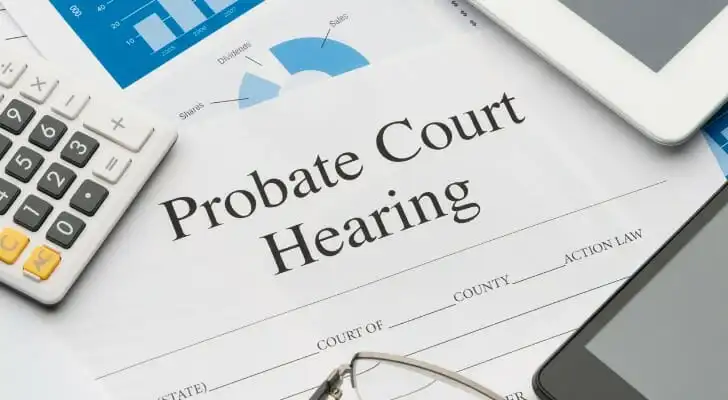If a trust is part of your estate plan, your assets will need to be transferred into it at some point. Most of the time, this is a fairly simple process that requires nothing more than listing the assets as part of the trust. However, transferring real estate property into a trust is more complicated. A new deed has to be issued and filed, insurers must be notified and, sometimes, permission must be obtained from the lender. Failure to properly transfer real property like a person’s home into a trust means your estate will have to go through probate after your death, likely adding considerable time and expenses to the process of settling your estate. Talk to a financial advisor about your plans for your estate.
Trust Basics
Trusts are widely used in estate planning so estates can avoid going through probate and maintain privacy. The terms of the trust ensure the wishes of the property owner are adhered to and their property gets distributed to the proper beneficiaries.
There are many different types of trusts, including living trusts, revocable and irrevocable trusts. However, they all become effective when assets are transferred into them.
There are some restrictions on the types of assets that can be transferred into trusts. For example, IRAs can’t be placed directly in a trust like other assets can (although the same effect can be achieved by naming an IRA as the beneficiary of the trust).
Otherwise, assets that can be placed in a trust include:
- Vehicles
- Cash and bank accounts
- Brokerage accounts
- Securities such as stocks and bonds
- Business interests
- Life insurance
- Collectibles, art and other personal property
Placing personal property like jewelry, furniture and, sometimes, vehicles, can be as simple as including the property on a list of assets drawn up when the trust is created.
Other asset transfers can be more complicated. Stock and bond transfers are generally handled through a brokerage or the financial institution that is holding them for the owner. Life insurance is often not included in a trust. Instead, the beneficiary designations of the policy may be changed to name the trust as the recipient of the payout.
Transferring Real Property into a Trust
Real property, including a person’s personal home and any real estate investments, calls for a different set of steps. Essentially, a new deed has to be created that names the trust as the owner of the property. The new deed also must be recorded at the courthouse.
The transfer can be accomplished with two types of deeds. A quitclaim deed is the easiest and most commonly used. It is often possible for a trust owner to create a quitclaim deed without the help of an attorney. The other type, a warranty deed, involves a guarantee that the person transferring ownership has the right to do so and that no outstanding liens will interfere with the transfer. Warranty deeds cost more because involve checking for liens.
Once either type of deed is prepared, it must be signed by the owner, witnessed by a notary and recorded at the county courthouse. Only then will the property be transferred to the trust.
Property Transfer Considerations
A number of problems can arise when transferring property to a trust. First, the transfer may not happen or may not be effective. This could happen if the owner sold a house that had been transferred to the trust, but then bought a new house and failed to transfer it into the trust. Any new real estate purchases should be recorded with the trust as the owner. If this step is neglected before the estate owner dies, there is no way to avoid probate.
Another problem may crop up if the property is not accurately described. The legal description of the property must be exactly correct for the transfer to take place.
Some mortgages have due-on-sale clauses that require the loan to be paid off if the property is sold or otherwise transferred. To avoid this, check with the mortgage holder and get permission before transferring property into a trust. Lenders will usually agree without calling the loan, but the formality needs to be observed to avoid potential problems.
Similarly, the issuer of any homeowner’s or other insurance policies on the property should be notified of the ownership change. This usually can be handled with a phone call to the insurance agent or broker.
The Bottom Line
Transferring real estate property into a trust is often an important part of estate planning. If neglected, this can force the estate to go through probate, which may increase costs and compromise the estate owner’s privacy. Transferring real estate involves issuing a new deed that names the trust as the owner. The new deed then must be registered at the county courthouse.
Estate Planning Tips
- Estate planning is one job where a financial advisor can provide particularly valuable insight and assistance. SmartAsset’s free tool matches you with up to three financial advisors in your area, and you can interview your advisor matches at no cost to decide which one is right for you. If you’re ready to find an advisor who can help you achieve your financial goals, get started now.
- You can pay an attorney thousands of dollars to create a trust as part of your estate plan. For many people, especially those with large or complex estates, this is likely the best approach. However, for those with smaller and more simple estates, online trust-making tools can reduce those costs to as little as zero while producing a legally enforceable document that gets the job done.
Photo credit: ©iStock.com/sqback, ©iStock.com/Andrii Dodonov, ©iStock.com/courtneyk


